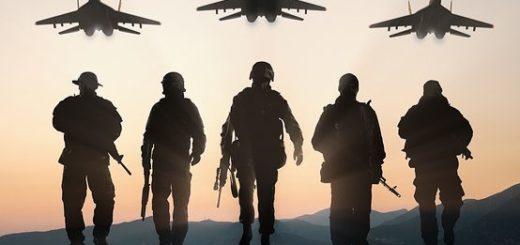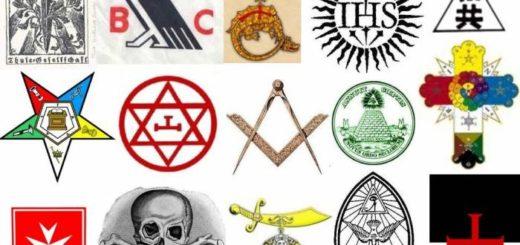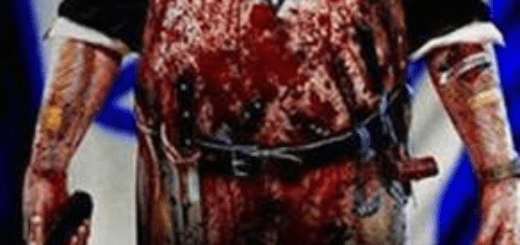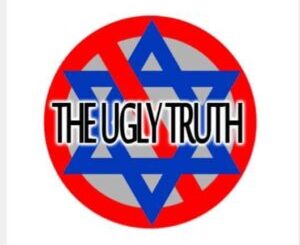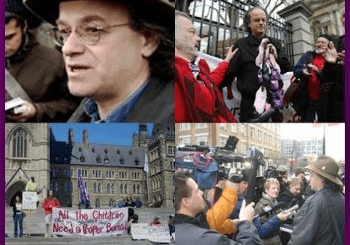
An important element of suppressed history is that Japan was actively seeking to negotiate a surrender as early as 1944 and throughout 1945. In April 1945, the war party of Japan was diminished, and a peace group headed by Kantaro Suzuki took office with the mission of ending the war.
The Secret MacArthur Memorandum Revealed
In a front-page article that appeared in The Chicago Tribune and Washington Times-Herald in Aug. 19, 1945, writer Walter Trohan reported that seven months earlier (on Jan. 20, 1945) President Roosevelt had received a 40-page memorandum from Gen. Douglas MacArthur outlining five separate surrender overtures from high-level Japanese officials just two days prior to his departure for the Yalta meeting with Stalin and Churchill.
Admiral William D. Leahy, FDR’s chief of staff, leaked the MacArthur communication to Trohan in early 1945 for fear it would be classified as top secret for decades or even destroyed. The authenticity of Trohan’s article was never challenged by the White House. Former President Herbert Hoover personally queried Gen. MacArthur on the Tribune’s story and the general acknowledged its accuracy in every detail.
The memo showed that the Japanese were offering surrender terms virtually identical to the ones ultimately accepted by the Americans at the formal surrender ceremony on Sept. 2 — that is, complete surrender of everything but the post of the emperor. Specifically, the terms of these peace overtures included:
- Complete surrender of all Japanese forces and arms, at home, on island possessions, and in occupied countries.
- Occupation of Japan and its possessions by Allied troops under American direction.
- Japanese relinquishment of all territory seized during the war, as well as Manchuria, Korea and Taiwan.
- Regulation of Japanese industry to halt production of any weapons and other tools of war.
- Release of all prisoners of war and internees.
- Surrender of designated war criminals.
Historian Harry Elmer Barnes in an article titled “Hiroshima: Assault on a Beaten Foe” (National Review, May 10, 1958) wrote:
The authenticity of the Trohan article was never challenged by the White House or the State Department, and for very good reason. After General MacArthur returned from Korea in 1951, his neighbor in the Waldorf Towers, former President Herbert Hoover, took the Trohan article to General MacArthur and the latter confirmed its accuracy in every detail and without qualification.
It is generally known that as WWII wound down, brain-addled President Roosevelt was surrounded by pro-Soviet elements. In February 1945 at Yalta, FDR was prepared to subject all of eastern Europe to the communist Soviet Union. He blathered:
“I just have a hunch that Stalin is not that kind of a man. I think that if I give him everything I possibly can and ask for nothing from him in return, ‘noblesse oblige’, he won’t try to annex anything and will work with me for a world of democracy and peace.”
Comment: One Jewish Zionist to another as both Roosevelt and Stalin were in the private club of Jews.
The idea that the U.S. needed Soviet forces to defeat Japan after Germany’s surrender is a myth. But the Soviets signaled that they wanted part of the Japanese spoils of war. It would have meant dragging out the Pacific war long enough so that the Soviets could wrap up the Battle of Berlin (early May 1945), and build and redeploy a force to the east.
Comment: Stalin was motivated by GREED. The Jewish British Empire makes a lot of money off of wars and they screw over friends and foes alike for MONEY. They are Satanists.
The Soviets declared war on Japan on Aug. 9 after the alleged A-bombs were dropped. This was an opportunistic war fought until V.J. Day on Sept. 2, and it allowed the Soviet Union a toehold in Manchuria and North Korea. It had zero strategic purpose or necessity for the U.S. Rather, it was just more Soviet looting and spoils. Receiving little mention is that 560,000 to 760,000 Japanese personnel in the Soviet Union and Mongolia were interned to work in labor camps as POWs. Of them, it is estimated that between 60,000 and 347,000 died in captivity. Not much transparency exists on this affair.
Comment: Jews love slavery and owned 90% of slaves. The Jewish Slavers brought most of the African slaves to America. BTW I am 1/2 Ashkenazi bloodline. They are Satanic people for sure. I know cuz I experienced how AWFUL Ashkenazi’s are…totally stone cold PSYCHOPATHS.
Read “Operation Keelhaul: Britain’s Repatriation of Anti-Communist Russians and Ukrainians to Stalin for Certain Death”
In addition, FDR, one of the nastiest characters of that era, determined that peace could not come until Japanese (and American servicemen) had suffered more. The measure of FDR as a war criminal and mass murderer can be found in the realization that he dismissed MacArthur’s report after only a “casual reading” and described the general as a “poor politician.” In reality, MacArthur was on the righteous side of history.
Comment: The ZIONIST FDR along with Jewish Stalin and Satanist Churchill were all working together AGAINST Their respective people in this war.
Thus, around the time of FDR’s death on April 12, 1945, and the hand off of power to poorly informed Truman, three different peace initiatives by Japan were rebuffed.
On April 7, acting Foreign Minister Mamoru Shigemitsu met with Swedish ambassador Widon Bagge in Tokyo and asked him “to ascertain what peace terms the United States and Britain had in mind.” Similar Japanese peace signals through Portugal, on May 7, and again through Sweden, on May 10, were largely ignored by the U.S.
Indeed, peace overtures from Japan were greeted with air assaults; notably, on May 23 and 25, 1945, with the greatest air raid of the Pacific war. More than 500 massive B-29 “Superfortress” bombers unleashed 4,500 tons of incendiary bombs on the heart of the already battered Japanese capital. Generating gale-force winds, the exploding incendiaries obliterated Tokyo’s commercial center and railway yards and consumed the Ginza entertainment district. Two days later, on May 25, a second strike of 502 “Superfortress” planes roared low over Tokyo, raining down some 4,000 tons of explosives. Together, these two B-29 raids destroyed 56 square miles, or half of the Japanese capital.

The May and June fire bombings had destroyed much of the country’s six largest cities, killing between 112,000 and 126,762 people and rendering millions homeless. From mid June until the end of the war, the firebombing was extended to undefended smaller and medium size cities. On one night of June 17, 1945 Hamamatsu, Kagoshima, Ōmuta, Fukuoka and Yokkaichi were each attacked and completely destroyed by a wing of B-29s using similar tactics to those employed in the firebombing raids against the major cities.

The B-29 firebombing campaign brought the destruction of 3.1 million homes, leaving 15 million people homeless and killing about a million of them. For the record, the Battle of Okinawa, fought April 1 to June 22, 1945, was wrapping up. The death toll was approximately 100,000 Japanese military personal, 100,000 island civilians (out of 300,000) and 20,195 Americans.

While it is true that there was a war party in Japan, as Okinawa was fully secured on June 22, Emperor Hirohito intervened as leader of a peace faction and called a meeting of the Supreme War Council, which included the prime minister, the foreign minister and the leading military figures.
“We have heard enough of this determination of yours to fight to the last soldiers,” said Emperor. “We wish that you, leaders of Japan, will strive now to study the ways and the means to conclude the war. In doing so, try not to be bound by the decisions you have made in the past.” Note that in April Hirohito had “advised” that the bushido or samurai last ender approach be abandoned. …
On July 12, Hirohito summoned Fumimaro Konoye, who had served as prime minister in 1940-41. Explaining that “it will be necessary to terminate the war without delay,” the Emperor said that he wished Konoye to secure peace with the Americans and British through the Soviets. As Prince Konoye later recalled, the Emperor instructed him “to secure peace at any price, notwithstanding its severity.”
The next day, July 13, Foreign Minister Shigenori Togo wired ambassador Naotake Sato in Moscow: “See [Soviet foreign minister] Molotov before his departure for Potsdam … Convey His Majesty’s strong desire to secure a termination of the war … Unconditional surrender is the only obstacle to peace …”
The primary fear for the Japanese — particularly after what happened in Europe to defeated Axis leadership — was that the Americans would humiliate their emperor or perhaps even execute him as a war criminal.
Summarizing the messages between Togo and Sato, U.S. naval intelligence said that Japan’s leaders, “though still balking at the term ‘unconditional surrender,’” recognized that the war was lost and had reached the point in which they have “no objection to the restoration of peace on the basis of the [1941] Atlantic Charter.” These messages, said Assistant Secretary of the Navy Lewis Strauss, “indeed stipulated only that the integrity of the Japanese Royal Family be preserved.”
Navy Secretary James Forrestal termed the intercepted messages “real evidence of a Japanese desire to get out of the war.”
Historian Alperovitz noted that “with the interception of these messages, there could no longer be any real doubt as to the Japanese intentions; the maneuvers were overt and explicit and, most of all, official acts.”
Koichi Kido, Japan’s Lord Privy Seal and a close adviser to the emperor, later affirmed: “Our decision to seek a way out of this war, was made in early June before any atomic bomb had been dropped and Russia had not entered the war. It was already our decision.”
Rather than wrapping up the end of hostilities, the Allies didn’t signal surrender terms until the Potsdam Declaration on July 27, 1945. In the declaration, the three governments agreed that Japan should be given the opportunity to end the fighting. They called on Tokyo to “proclaim now the unconditional surrender of all Japanese armed forces and to provide proper and adequate assurances of their good faith in such action. The alternative for Japan is prompt and utter destruction.”
However the terror continued as six more cities (Aomori, Ichinomiya, Tsu, Uji-Yamada Ōgaki and Uwajima) were attacked on 28 July. On the 1st of August, 836 B-29s staged the largest single raid of World War II, dropping 6,145 tons of bombs and mines. The cities of Hachiōji, Mito, Nagaoka and Toyama were the main targets of this operation; all four suffered extensive damage and 99.5 percent of buildings in Toyama were destroyed. The cities of Imabari, Maebashi, Nishinomiya and Saga were attacked on 5 August. On August 8 two days after Hiroshima, daylight incendiary raids were conducted against the cities of Yawata and Fukuyama; these attacks destroyed 21 percent of Yawata’s urban area and over 73 percent of Fukuyama.
There was a promise that Japan would not be enslaved as a race.
Not a word was said about the emperor. The sad irony is that, as it actually turned out, American leaders had already decided to retain the emperor as a symbol of authority and continuity. They realized, correctly, that Hirohito was useful as a figurehead and prop for their own occupation authority in postwar Japan.

But a short time later, U.S. jokers were eagerly licking their fangs to try out their new toys, which had just been made ready.
United States Strategic Bombing Survey (issued in 1946) stated in its official report: “Hiroshima and Nagasaki were chosen as targets because of their concentration of activities and population.”
After the July 1943 firestorm destruction of Hamburg, the mid-February 1945 holocaust of Dresden and the fire bombings of Tokyo and other Japanese cities, America’s criminal leaders were, as U.S. Army Gen. Leslie Groves later put it, “generally inured to the mass killing of civilians.”
Read “The Non-Existent Trial of British War Criminal and Monster Frederick Lindemann”
On Aug. 6, 1945, the world dramatically entered the Atomic Age. With neither warning or precedent, an American plane dropped a single nuclear bomb on Hiroshima. About 90,000 civilians were killed immediately. Another 40,000 were injured, many of whom died in protracted agony from radiation sickness. Three days later, a second atomic strike on the city of Nagasaki killed some 37,000 people and injured another 43,000. Together, the two bombs eventually killed an estimated 200,000 Japanese civilians.
Takeaway: There is a debate that I entered into that incendiary and not atomic weapons were used. I no longer have a strong opinion either way, but this was discussed in this post: “Was Hiroshima Firebombed and Not Nuked?”
Admiral Leahy, chief of staff to presidents Roosevelt and Truman, summed up the whole affair:
“It is my opinion that the use of the barbarous weapon at Hiroshima and Nagasaki was of no material assistance in our war against Japan … The Japanese were already defeated and ready to surrender because of the effective sea blockade and the successful bombing with conventional weapons … My own feeling was that in being the first to use it, we had adopted an ethical standard common to the barbarians of the Dark Ages. I was not taught to make war in that fashion, and wars cannot be won by destroying women and children.”
Final takeway: The war could have ended in June (if not sooner) right after Okinawa. All it would have taken were gestures on a few points of Japanese pride and it would have been over, thus preventing all the casualties of July and August of 1945. This is a case of victors, who were very much bullies and criminals, kicking their enemy (civilians) when they were down and following a pattern that was very much repeated in Germany. Overrated criminal psychopath FDR said it all: “They need to suffer more.”
Comment: Typical Jewish HATRED.
In the book “The Decision to Drop the Atomic Bomb,” historian Dennis D. Wainstock concludes that the bombings were not only unnecessary but were based on a vengeful policy that actually harmed American interests. He writes (pp. 124, 132):
By April 1945, Japan’s leaders realized that the war was lost. Their main stumbling block to surrender was the United States’ insistence on unconditional surrender. They specifically needed to know whether the United States would allow Hirohito to remain on the throne. They feared that the United States would depose him, try him as a war criminal, or even execute him …
Unconditional surrender was a policy of revenge, and it hurt America’s national self-interest. It prolonged the war in both Europe and East Asia, and it helped to expand Soviet power in those areas.
Comment: What I was told by an insider is that to be President you have to be willing to murder children. If you are not willing to murder children you will not be a President. I was told by Political Activists That ALL our Presidents must cross the bar being a PEDOPHILE. These are facts I have been told. Both have been connected to many Presidents. Furthermore, Our gov’t is representing a CRIME SYNDICATE-a Jewish Mafia aka British Empire as the British Royals are all Jews who have usurped the throne.

